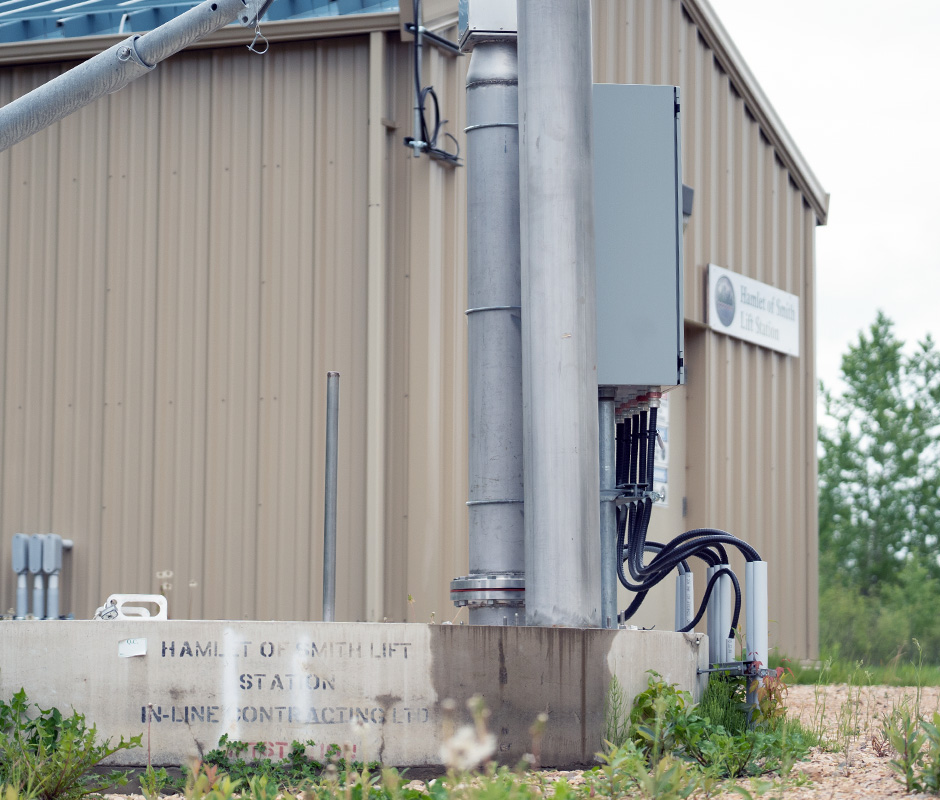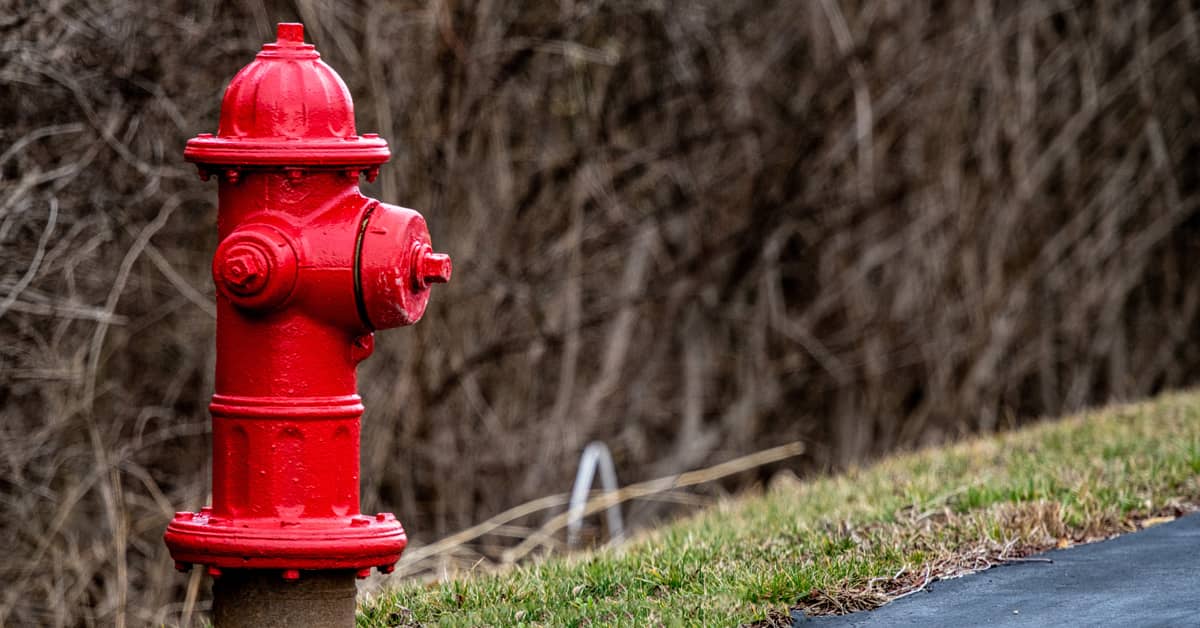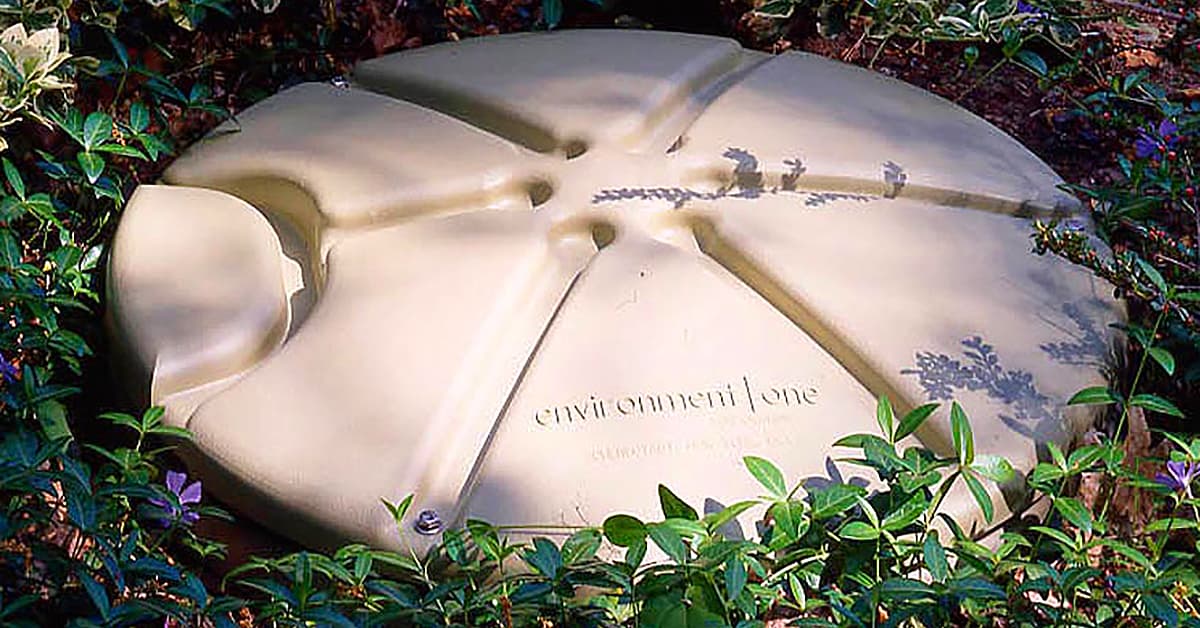The Utilities department provides critical engineering, operations and maintenance services for our communities. Helming a spectrum of planning, construction, operation and maintenance roles, this team works tirelessly to ensure everyone within in the MD’s borders has a safe and reliable supply of drinking water.

Improving our
WATER INFRASTRUCTURE
Thanks to hard work and the momentum of a particularly productive year, the Utilities team is nearing completion of some important water infrastructure projects. Below are some key highlights, plus a shortlist of important infrastructure upgrades the MD has made over the past several years.
2022 Milestones and Works in Progress
Better Tasting Water
Reliable and Redundant Water Capture
The Utilities team manages two stations that pump raw water from Lesser Slave Lake to its treatment facilities in Smith and Canyon Creek. This becomes the water we use in our homes and businesses — and for mission-critical fire suppression purposes. These pump stations are vital to providing the entire MD with a reliable water supply, and the time has come to replace them.
The water intake rehabilitation project is already underway, with an estimated window of two years to bring the Smith and Canyon Creek facilities to optimum operational status. The Canyon Creek phase will also see a redundant underground intake line to immediately divert intake water in the event of a rupture in the main line.
Utility Electronic Billing
Ratepayers can now opt to receive their utility invoices via email instead of regular post. Want to make the switch to electronic billing? Visit mdlsr.ca/utilities to download and complete the E-send enrolment form. Those who don’t submit an enrolment form will continue to receive their usual paper invoice in the mail.
Regardless of which billing method you choose, payment methods stay the same: by mail, via online banking, or in-person at the Slave Lake and Flatbush MD offices.
Latest Water & Utilities News

Annual hydrant flushing underway

Purchasing or Replacing Your Sewer Grinder Pump
Lead Test Programs
Southshore Sewer Project
The MD completed the final stage of a $21.3 million wastewater facility in 2006 that provides rural sewage collection and treatment services to the Southshore communities of Canyon Creek, Widewater, Wagner, and Nine Mile Point.
The Southshore Sewer Project, which was the largest project ever undertaken by the municipality, was also Alberta’s first municipal membrane bioreactor and precedent setting in its use of new, innovative biotechnology.
Construction of a low pressure wastewater collection system, treatment facility, and wetland commenced in 2004 and was completed in late 2005.
Since start-up in early 2006, the state-of-the-art facility has consistently produced high-quality effluent in terms of low organics, suspended solids, nutrients, and microorganisms, which will meet the demands of the community for the foreseeable future while protecting the environment.
Late 2011 saw the installation of a lift station, collector lines, and private service connections to over 250 residences. An additional 150 private service connections are scheduled for completion in 2012. All serviceable residents were required to connect to this municipal wastewater system per Bylaw 2003-08.
This successful project was the result of collaborative efforts of the municipality, Alberta Environment, Alberta Infrastructure and Transportation, Infrastructure Canada-Alberta Program, and area residents.
Southshore Sewer Project Documents
Water Meter Replacement Project
Your water meter contains two key components: a water meter body through which water passes into your home, and a battery-powered sensor (register) that reads the volume of water that passes through the meter body. The Water & Utilities department visited households across the MD to replace water meter sensors at no cost to ratepayers.
A Better Sensor for Continued Reliable Readings
While the brass body of MD water meters will remain functional for many more years, the existing sensors have a limited lifespan and must be changed periodically. The new sensors incorporate new LED & signalling technology which will improve battery lifespan. These sensors are expected to last between 15 and 20 years.


